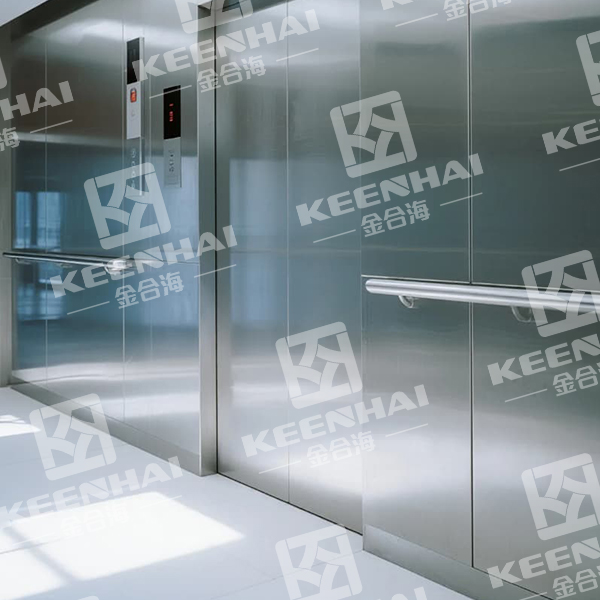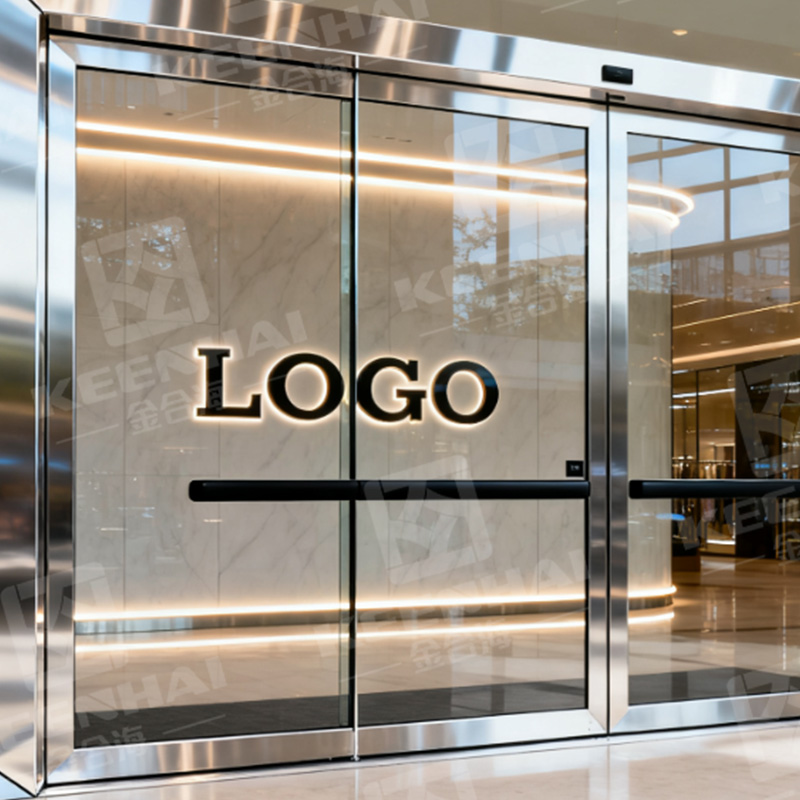Inox and stainless steel are often the same thing, but buyers compare them when looking at grades. Both materials resist rust, yet 316 stainless performs better in coastal or chemical settings. If you want durability for kitchens or outdoor projects, inox is a safe investment.
1.Durability Comparison
1.1 Resistance to Corrosion
When comparing inox and stainless steel products, corrosion resistance is one of the first things that engineers and buyers look at. Both materials are essentially the same alloy family, but the level of chromium and the presence of elements like nickel or molybdenum can change performance drastically. Inox grades with higher chromium—around 18%—show excellent resistance in outdoor railings exposed to constant rain. By contrast, cheaper stainless grades such as 201 can stain over time if used in coastal projects.
To make the contrast clearer, here’s a simple breakdown of resistance levels:
| Material Type | Chromium Content | Corrosion Resistance in Coastal Areas | Common Applications |
|---|---|---|---|
| Inox 304 Stainless Steel | ~18% | Good, occasional discoloration | Kitchen counters, wall panels |
| Inox 316 Stainless Steel | ~18% + molybdenum | Excellent, highly resistant | Marine structures, outdoor railings |
| Stainless Steel 201 Grade | ~16% | Fair, prone to rust in salt air | Interior decorative trims |
In real construction, marine walkways and bridges typically use 316 inox, while commercial kitchens often rely on 304 countertops to balance cost and durability.
1.2 Strength and Longevity
Durability is not only about rust. Strength under pressure also matters. Inox and stainless steel both hold up far better than mild steel or aluminum, especially under repeated mechanical stress. In elevator doors, stainless steel panels are often chosen because they resist dents from daily traffic, whereas softer alloys would deform quickly (see elevator door solutions).
If properly installed and maintained, a 304 stainless handrail in a high-traffic office building can last decades without needing replacement. Inox with higher nickel content tends to resist cracking better in cold climates, which is why it’s preferred for outdoor public seating or structural brackets in northern regions. On the other hand, thinner stainless panels can warp if not supported correctly, so choosing the right thickness is crucial for long-term stability.
1.3 Maintenance Requirements
Durability also depends on how easy it is to maintain the surface over time. Inox with a polished finish requires little more than routine wiping, while brushed stainless may collect fine dust and fingerprints that need regular cleaning. In commercial column cladding panels, property managers usually prefer stainless steel with a PVD finish because it resists smudges and reduces the frequency of cleaning (see column cladding options).
-
For outdoor installations such as handrails or gates, rinse the surface with fresh water at least once a month if the site is near the ocean.
-
For indoor architectural stainless, wipe with a microfiber cloth and neutral detergent to prevent buildup.
-
For PVD-coated surfaces, avoid abrasive pads—these coatings are scratch-resistant but should not be treated like raw metal.
In practical scenarios, airports and metro stations choose PVD stainless steel panels for wall cladding not only because they resist corrosion but also because they cut maintenance costs by reducing cleaning cycles. This makes them more sustainable over the building’s life span.

2.Price Differences
2.1 Raw Material Costs
The biggest factor that separates inox from stainless steel products is the raw material composition. Both are part of the same family, but the percentage of nickel and chromium makes a noticeable difference in cost. For example, grade 316 inox contains molybdenum, which significantly improves corrosion resistance but also raises the price compared to grade 304. In global markets, nickel price fluctuations directly affect stainless steel sheet costs, while inox with less nickel content tends to remain slightly more affordable.
Here is a clear comparison of raw material cost influence:
| Grade / Material | Key Alloying Elements | Relative Cost Level | Typical Applications |
|---|---|---|---|
| Stainless Steel 201 | Lower nickel, more manganese | Low | Decorative trims, indoor furniture |
| Inox 304 | ~18% chromium, 8% nickel | Дунд зэрэг | Kitchen counters, wall cladding |
| Inox 316 | Chromium + molybdenum | High | Marine rails, chemical plants |
In practical construction projects, developers often choose 304 inox for building facades to strike a balance between performance and material cost. By contrast, 316 is reserved for seafront properties or chemical industry facilities where failure could be far more expensive than the upfront investment.
2.2 Manufacturing and Processing Expenses
Material price is only part of the story. Processing inox or stainless steel into finished products adds another cost layer. Cutting, bending, and welding thicker panels takes more energy and specialized equipment. For example, elevator door fabricators typically pay higher labor costs for polishing large stainless panels to achieve a mirror finish (explore elevator door options).
Additional expenses come from surface treatments. PVD coating, which deposits thin decorative and protective layers, costs more upfront but reduces long-term maintenance. That’s why shopping malls often pay extra for PVD stainless steel escalator panels—the upfront polishing and coating fees are offset by lower cleaning and replacement costs.
2.3 Market Availability and Pricing Trends
Market demand also drives price differences. Inox grades such as 304 are widely produced and available worldwide, keeping the price relatively stable. On the other hand, high-alloy stainless steels or custom finishes may face supply shortages, pushing costs higher.
For example, in Southeast Asia, the surge in real estate projects increased demand for column cladding, which caused temporary price spikes for architectural stainless panels (see column cladding solutions). In contrast, the North American market remains steadier, as mills maintain consistent production levels for construction-grade stainless.
Real-world projects illustrate this well: a luxury hotel in Dubai may pay a premium for gold PVD stainless wall panels imported from Europe, while a commercial office tower in Chicago may rely on mass-produced 304 sheets from domestic mills to control budgets. These variations highlight how global and regional factors affect final prices beyond just material properties.

3.Common Uses of Inox
3.1 Kitchenware and Household Items
Inox has become the backbone of modern kitchens. Pots, pans, cutlery, and sinks rely on grades like 304 because they resist stains from sauces, acids, and oils. Unlike aluminum cookware that scratches easily, inox holds its shine even after years of daily scrubbing. For instance, chefs prefer inox knives because they can withstand frequent sharpening without losing their edge.
Households also benefit from inox in less obvious ways. Refrigerators often use inox panels for both durability and aesthetics, while washing machines employ inox drums to handle high-speed rotations without rusting. These practical uses explain why inox dominates premium home appliance design. If you’re exploring broader options, you can check out our stainless steel products, which cover multiple household applications beyond cookware.
3.2 Architectural and Decorative Applications
Inox is equally at home in architecture. Building facades, interior wall panels, and handrails all make use of inox’s sleek appearance combined with structural strength. Developers favor inox for high-end projects because it offers a reflective, modern finish that requires minimal upkeep compared to painted metals.
One striking example is inox column cladding in shopping malls, which provides a premium feel while protecting structural concrete. In hotels, PVD-colored inox sheets transform lobbies into statement spaces with gold, bronze, or black finishes. These treatments are not just for show—they also improve resistance against scratches from luggage carts or cleaning equipment. To see real applications, explore our column cladding solutions, which are widely used in both commercial and residential settings.
Here’s a comparison showing how inox is used differently in decorative versus structural roles:
| Application Area | Common Inox Grade | Typical Thickness | Main Benefit |
|---|---|---|---|
| Decorative wall panels | 304 with PVD coating | 0.8–1.2 mm | Visual impact + easy cleaning |
| Structural handrails | 316 solid tubing | 1.5–3.0 mm | Strength + corrosion resistance |
This balance between aesthetics and engineering makes inox an architect’s favorite material for both exterior and interior projects.
3.3 Industrial and Engineering Purposes
Inox also plays a critical role in heavy industries where reliability is non-negotiable. In chemical plants, grade 316 stainless is widely used in storage tanks and pipelines because it withstands aggressive chlorides and acids. In the food processing sector, inox conveyor belts and mixing equipment ensure hygiene, as the smooth surface resists bacterial growth.
Engineers follow strict steps when choosing inox for industrial use:
-
Identify the environment – indoor, outdoor, marine, or chemical exposure.
-
Select grade accordingly – 304 for general use, 316 for marine or chemical, duplex stainless for extreme loads.
-
Decide on finishing – brushed finish for slip resistance, polished finish for easy cleaning.
-
Consider long-term maintenance – calculate not only upfront material costs but also cleaning and replacement cycles.
Power plants and offshore oil rigs are two sectors where inox literally saves lives by preventing structural failures under high pressure and temperature. For architectural crossovers, many commercial buildings now adopt the same industrial-grade inox in elevator doors, ensuring both safety and design appeal. You can browse our elevator door options to see how engineering standards meet architectural beauty.

4.Durability and Maintenance
4.1 Resistance to Corrosion and Wear
Inox is known for its ability to resist corrosion, and this is the primary reason it outperforms many metals in harsh environments. For instance, in coastal buildings, inox railings last significantly longer than painted steel because the chromium oxide layer self-heals when scratched. Meanwhile, grade 316 stainless is the preferred choice in swimming pool areas where constant exposure to chlorinated water would destroy ordinary metals.
In high-traffic commercial spaces such as airports, inox wall panels endure constant contact from luggage and cleaning equipment without losing their finish. This explains why inox is the go-to solution for зэвэрдэггүй ган бүрээс in modern infrastructure projects.
| Environment | Commonly Used Inox Grade | Service Life (Approx.) | Засвар үйлчилгээний хэрэгцээ |
|---|---|---|---|
| Coastal exterior | 316 | 25–35 years | Minimal rinsing with fresh water |
| Indoor public area | 304 | 30+ years | Routine cleaning only |
| Swimming pool zone | 316 | 20–30 years | Regular descaling required |
4.2 Cleaning and Care Practices
Maintaining inox is straightforward, which adds to its long-term appeal. The smooth, non-porous surface prevents dirt from sticking, making regular cleaning quick and efficient. In most household settings, warm water and a mild detergent are enough.
For commercial buildings or large installations like stainless steel elevator doors, facility managers typically follow three steps:
-
Rinse the surface with clean water to remove dust or loose particles.
-
Apply mild cleaning agents using a microfiber cloth to avoid scratches.
-
Polish with a dry cloth to restore shine and maintain its reflective appearance.
A common mistake is using abrasive powders or steel wool, which can damage the protective chromium layer. Once scratched too deeply, localized corrosion may begin. That’s why industries train their cleaning teams on proper inox care routines.
4.3 Long-Term Maintenance Costs
While inox may have a higher initial price than mild steel or aluminum, its long-term maintenance costs are significantly lower. A mild steel facade might require repainting every 5 years, but inox panels typically hold their finish for decades without special treatments.
In real estate projects, developers often calculate lifecycle costs before material selection. When comparing inox to painted steel, the difference becomes clear:
| Материал | Initial Cost | Maintenance Frequency | Estimated 20-Year Expense |
|---|---|---|---|
| Painted steel | Low | Repainting every 5–7 years | High |
| Aluminum | Дунд зэрэг | Occasional anodizing touch-ups | Дунд зэрэг |
| Inox (304/316) | High | Basic cleaning only | Low |
For industries where uptime matters—like hospitals, airports, and shopping malls—choosing inox is not only about appearance but also about minimizing operational disruptions caused by constant repairs. Developers who select inox doors, cladding, or handrails often highlight its “install and forget” advantage.
Compare grades, finishes and real-time prices in our durable stainless steel product catalog.






